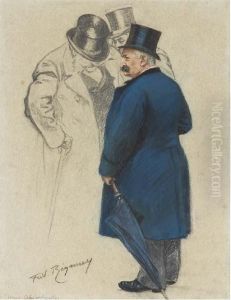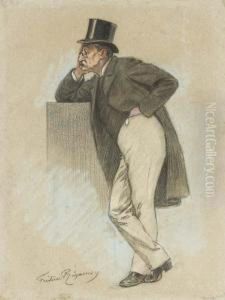Frederic Regamey Paintings
Frédéric Regamey was a Swiss-French artist born on January 1, 1849, in Paris, France. His artistic career spanned various disciplines, including painting, illustration, and etching. Regamey was known for his versatility and ability to capture the essence of his subjects with precision and sensitivity.
Regamey's family had a strong connection to the arts, which influenced his early interest in art. His father, Rodolphe Töpffer, was a Swiss teacher, author, painter, cartoonist, and caricaturist, who is considered the father of modern comic strips. This environment undoubtedly nurtured Regamey's creative talents from a young age.
Initially, Regamey was trained as a lithographer, but he soon found his true passion in painting and illustration. He studied under various prominent artists of his time, which helped him to develop a unique style that blended realism with a certain poetic quality. His works often depicted scenes from everyday life, capturing the spirit of the Belle Époque in France.
Regamey's illustrations were published in various periodicals and books, contributing to his reputation as a skilled draftsman and printmaker. He was particularly adept at wood engraving, a technique that allowed for fine detail and texture in printed images. His illustrations often accompanied texts in magazines like 'Le Monde Illustré' and 'L'Illustration', which were popular during the late 19th and early 20th centuries.
In addition to his graphic work, Regamey was an accomplished painter. He exhibited his paintings in several Paris Salons, receiving recognition and awards for his contributions to French art. His subjects ranged from genre scenes to landscapes and portraits, showcasing his ability to work with a variety of themes and settings.
Throughout his career, Regamey remained actively involved in the Parisian art scene. He was a member of the Société des Artistes Français and the Société Nationale des Beaux-Arts. His work was widely appreciated, and he built a reputation as a dedicated and skilled artist.
Frédéric Regamey passed away on April 7, 1925, in Fontenay-aux-Roses, France. His legacy is preserved through his diverse body of work, which continues to be studied and admired for its contribution to the art of the late 19th and early 20th centuries.




